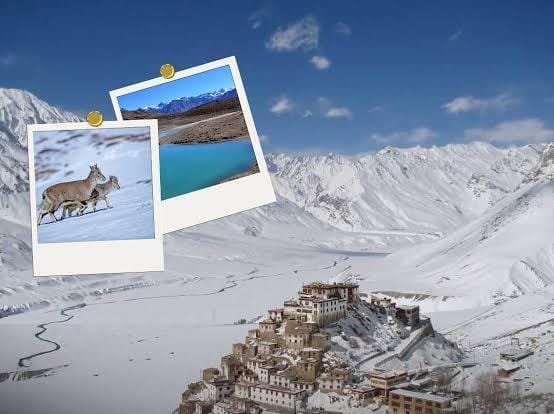Spiti Valley in Himachal Pradesh has become India’s first Cold Desert Biosphere Reserve recognized by UNESCO, highlighting its rich biodiversity, unique cultural heritage, and sustainable living practices. Spanning 7,770 sq km at high altitudes, this designation supports conservation, research, eco-tourism, and climate resilience in one of the world’s most fragile ecosystems.
Spiti Valley, nestled high in Himachal Pradesh’s Lahaul-Spiti region, has earned a landmark recognition as India’s first Cold Desert Biosphere Reserve under UNESCO’s Man and the Biosphere Programme. This historic inclusion on the UNESCO Global Network of Biosphere Reserves places Spiti’s fragile and rare cold desert ecosystem on the world conservation map, reflecting its ecological and cultural importance.
Spanning a vast 7,770 square kilometers at altitudes ranging from 3,300 to 6,600 meters, the reserve encapsulates some of the planet's coldest and driest landscapes, shaped by glacial forces and icy winds. Despite seemingly barren terrain, it harbors remarkable biodiversity including elusive snow leopards, Himalayan blue sheep, Tibetan wolves, red foxes, ibex, and golden eagles. The region also supports 655 herb species, 41 shrubs, and 17 tree varieties, including 47 medicinal plants integral to the ancient Tibetan healing tradition of Sowa Rigpa.
Beyond its natural wonders, Spiti is home to about 12,000 people who have lived sustainably in harmony with the land for centuries, practicing traditional farming and water management suited for high-altitude survival. The biosphere reserve is divided into three zones—core, buffer, and transition—which balance strict ecological protection with local livelihoods and regulated eco-tourism.
This UNESCO status not only spotlights Spiti globally but also promises enhanced international research collaboration and conservation funding. It advances efforts to protect one of the most climate-vulnerable Himalayan zones, preserving its delicate soils and ecosystems amid rising environmental challenges. The designation also affirms the community’s valuable role in coexisting peacefully with wildlife and maintaining the region’s unique cultural heritage.
In joining India’s 13th UNESCO biosphere reserve network alongside sites like Nilgiris and Sundarbans, Spiti sets a new standard for ecological resilience and sustainable development in extreme environments. This recognition is a historic triumph for ground-level conservation, showcasing nature’s and humanity’s remarkable partnership in one of Earth’s most extraordinary cold deserts.
Key Highlights:
-
Spiti is India’s first cold desert biosphere reserve recognized by UNESCO’s Man and the Biosphere Programme.
-
The reserve covers 7,770 sq km with altitudes of 3,300 to 6,600 meters, including key wildlife sanctuaries and alpine wetlands.
-
Rich biodiversity includes snow leopards, blue sheep, Tibetan wolves, and rare medicinal plants critical to Tibetan medicine.
-
Local communities practice sustainable agriculture and water use, living in harmony with the fragile ecosystem.
-
The biosphere is zoned into core, buffer, and transition areas balancing protection with community livelihoods.
-
UNESCO status enables global research collaboration, conservation funding, and strengthens eco-tourism.
-
It is the 13th UNESCO biosphere reserve in India, strengthening climate resilience in the Himalayas.
Sources: The Better India, Moneycontrol, The New Indian Express, India Today, Vision IAS



